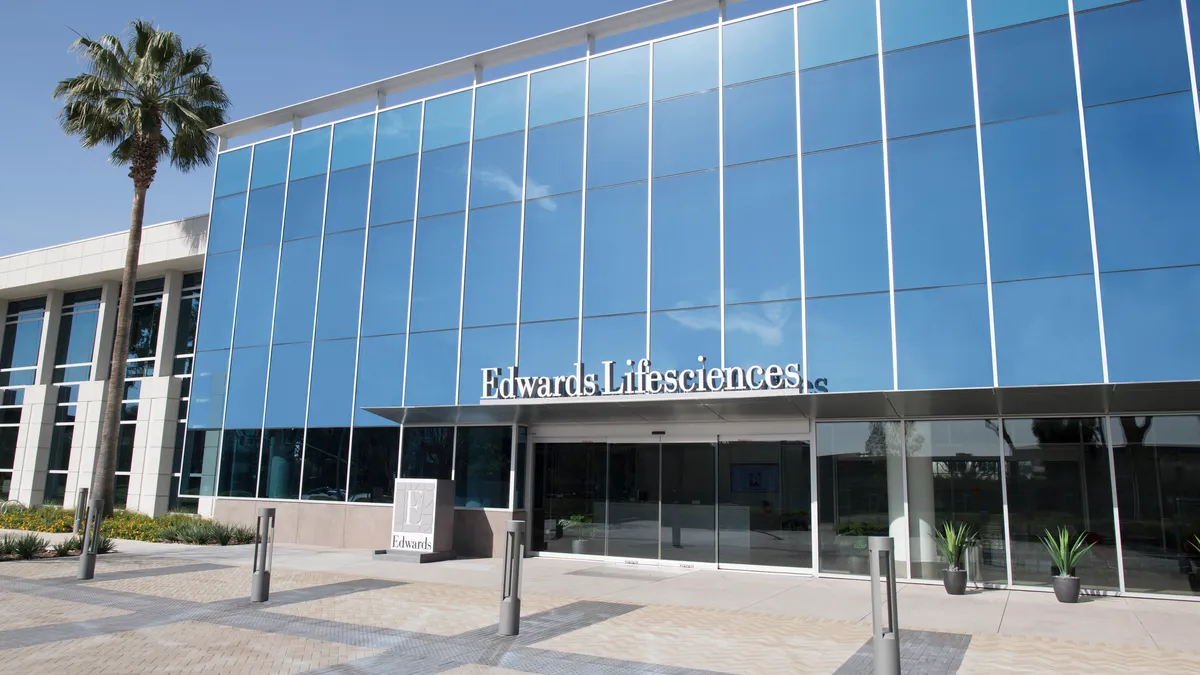Dive Brief:
- Edwards Lifesciences has quashed hopes of a fast recovery from the delta wave, warning that October TAVR volumes remain suppressed and forecasting little quarter-on-quarter growth.
- The surge in U.S. COVID-19 cases through August and September hit Edwards, causing TAVR sales in the key market to come in well below original analyst expectations. A weak quarter was largely expected based on knowledge of the impact of delta on hospitals.
- However, comments by other medtech companies, coupled with the waning of the delta wave, pointed to a potential recovery in October. Investors seemed cautious about Edwards heading into the end of the year, however, driving the company's stock down nearly 2% Thursday morning.
Dive Insight:
Edwards posted 12% growth in U.S. TAVR sales in the quarter, compared to analyst expectations of 15% to 19%. The sales miss reflected the impact of the delta-driven surge in COVID-19 cases across much of the third quarter. With a weak third quarter baked into expectations, analysts went into this season of medtech results focused on the pace of the recovery. Edwards was disappointed in that regard.
"In October, we saw run rates that were similar to what we saw in the last couple of months of Q3," Edwards CEO Mike Mussallem said on a Wednesday earnings call. "We didn't want to send a signal that all of a sudden October is back to the kind of thing that we were experiencing in Q2. We're not experiencing that kind of an environment yet."
The comment contrasts somewhat with the messages coming out of companies such as Johnson & Johnson, which said hospital systems ramped up again and restarted elective procedures over the first few weeks of October. J&J supports a different set of procedures than Edwards but there were hopes that TAVR volumes would benefit from the fall in U.S. COVID-19 cases since mid-September.
Mussallem offered a hypothesis for why volumes remained down in October. "Maybe TAVR is a bit of a trailing indicator of what's happening with COVID, that the cases ultimately turn into ICU stays, and it probably affects our caseload a little bit later, but that's a bit speculative on our part," the CEO said.
Faced with continued headwinds, Edwards forecast fourth quarter TAVR sales of $850 million to $910 million, compared to the $944 million expected by analysts. The bottom end of the range is below the $858 million the franchise generated in the third quarter. Even if Edwards hits the top end of the range, it will only grow TAVR sales by 6% over the delta-ravaged third quarter. Across the whole company, Edwards expects to hit its prior guidance.
The sluggish start to the fourth quarter points to the potential for acceleration down the line. BTIG analysts highlighted "the potential for another small boost from delayed cases returning for care, as was seen in Q2," while their peers at Jefferies identified "the growing backlog and potential for a V-shaped recapture starting early next year" as "early bullish indicators for the 2022 outlook."












